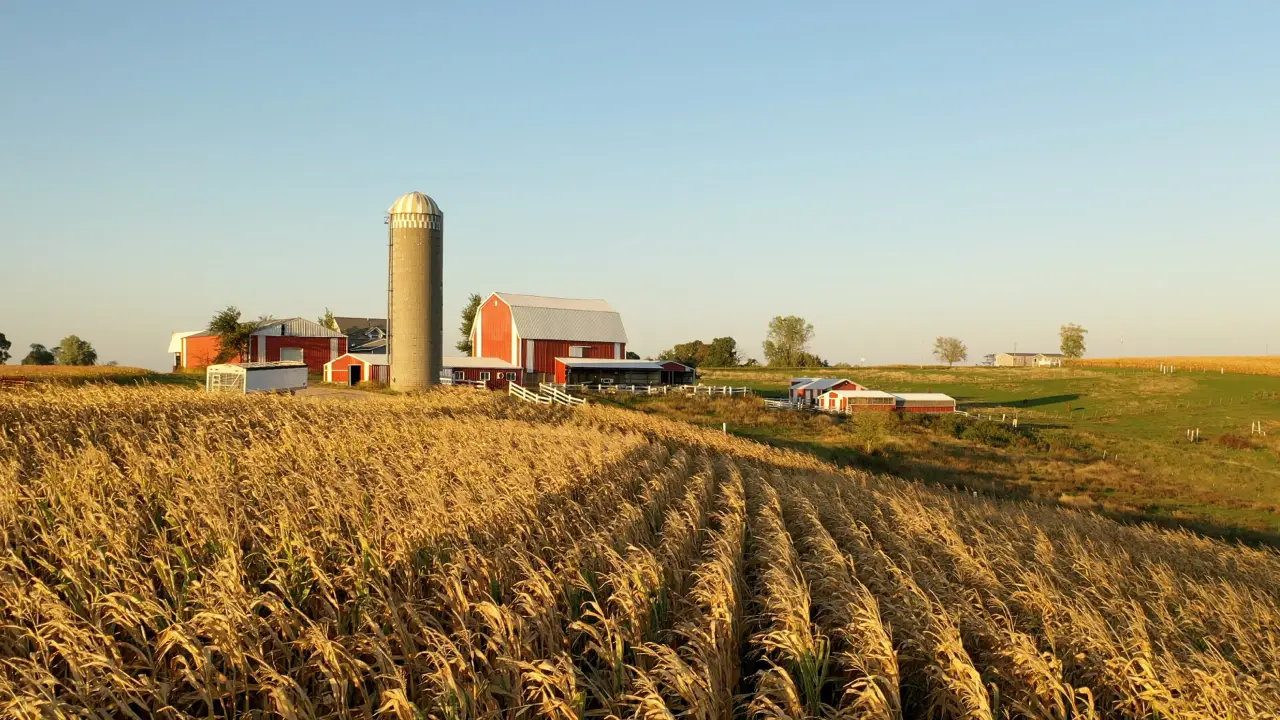
Key Takeaways
- Texas is the state with the most farmland. It has 231,000 farms covering 125 million acres. The state produces a diverse range of crops, such as hay, cotton, and corn
- Family-owned farms continue to dominate, sustaining agricultural traditions and supporting local economies
- The number of farms in the US has gradually declined since 2007, with around 1.88 million farms reported in 2024
Agriculture is a cornerstone of the US economy, with big farming states leading the way in production and innovation. These states not only supply the nation with food and resources but also drive job growth and strengthen local economies.
This article explores the top farming states in America, their economic impact, and famous farms in the United States. It also answers the questions ‘What state has the most farmland?’ and ‘How many farms are in Texas and other states?’
Atlantic Project Cargo offers reliable logistics solutions that keep the global food supply chain moving. We specialize in the secure and efficient transport of agricultural equipment, helping farmers around the world deliver the machinery straight to their farms.
Get Your Free Quote Today!
Why Do Farming States in the USA Matter?
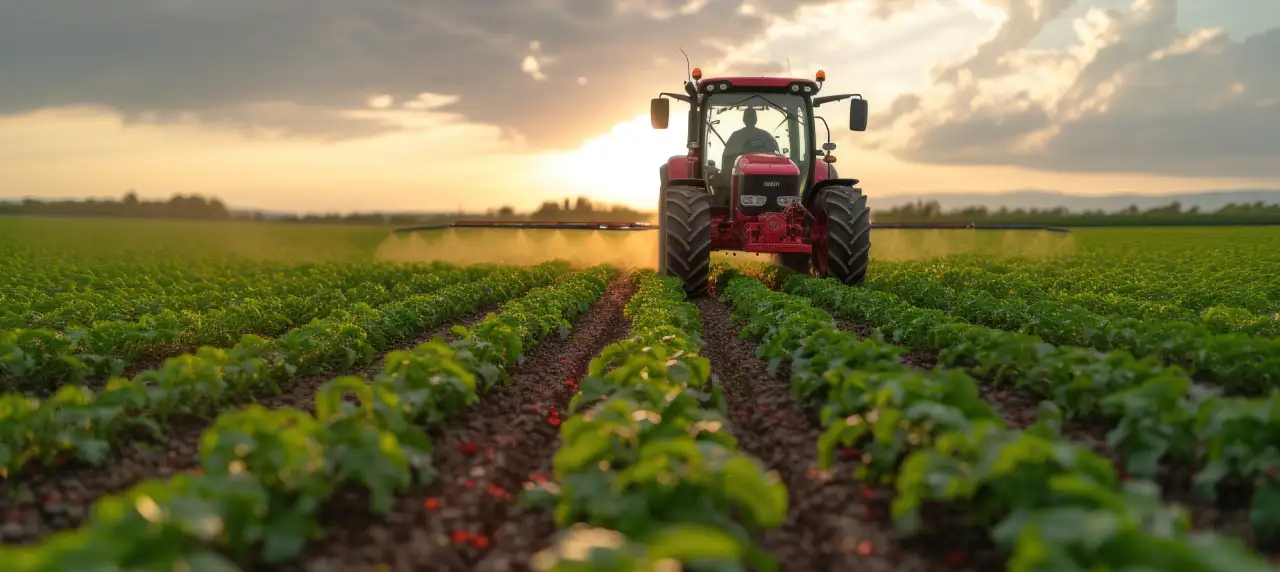
Farming in the USA is crucial to the country’s economy, supplying food, raw materials, and economic stability to domestic and global markets. The top farming states produce vast quantities of crops and livestock, ensuring a steady and secure food supply while sustaining rural jobs and industries. Without these key states, everyday essentials from groceries to manufacturing materials would be far less accessible.
Key Factors That Make States Agricultural Powerhouses
The success of leading farming states in the US depends on natural advantages and modern advancements. Here is what sets them apart:
- Climate
Ideal weather conditions enable year-round cultivation and livestock production. Also, certain states excel in specific crops due to their unique climates - Soil Quality
Fertile, nutrient-rich land boosts crop yields and supports diverse agriculture, making some regions naturally more productive - Technology and Innovation
Cutting-edge machinery, precision farming, and sustainable practices maximize efficiency and output, keeping these states at the forefront of agriculture - Infrastructure and Supply Chains
Robust transportation networks, storage facilities, and food processing hubs ensure smooth distribution, reducing waste and increasing profitability for farmers in the USA
How Many Farms Are There in the United States?
There were about 1,880,000 farms in the United States in 2024.
However, the number of farms and ranches in the US has steadily declined since 2007. By 2023, the count had dropped to roughly 1.89 million — a slight decrease from 1.9 million the year before.
Top Farming States by Number of Farms
Let’s explore the US states with the most farmland.
Texas
| Number of Farms | Acres Operated |
|---|---|
| 231,000 | 125,000,000 |
Texas, one of the biggest farming states, has an impressive agricultural output, cultivating everything from corn and cotton to cucumbers and oranges. This agricultural region serves as a major economic driver, with farming playing a vital role in the state’s economy.
The majority of Texas farms are privately owned, with approximately 89% operated by families or individuals in 2022. Another 13,566 farms (5.9%) were owned by partnerships, while 8,830 farms (3.8%) were operated by corporations. Estates or trusts made up about 1.2% of farms in Texas.
In addition, Texas has the largest farm in the US — the King Ranch. Founded in 1853 in South Texas, this ranch covers about 825,000 acres and is still working. It grows crops like cotton, grain, sugarcane, and citrus. In addition, the ranch is known for its cattle breeding programs.
| Top Commodities | Value of Production in Dollars |
|---|---|
| Hay | 2,099,800,000 |
| Cotton, upland | 1,220,160,000 |
| Corn, grain | 1,020,768,000 |
| Wheat | 431,210,000 |
| Peanuts | 216,788,000 |
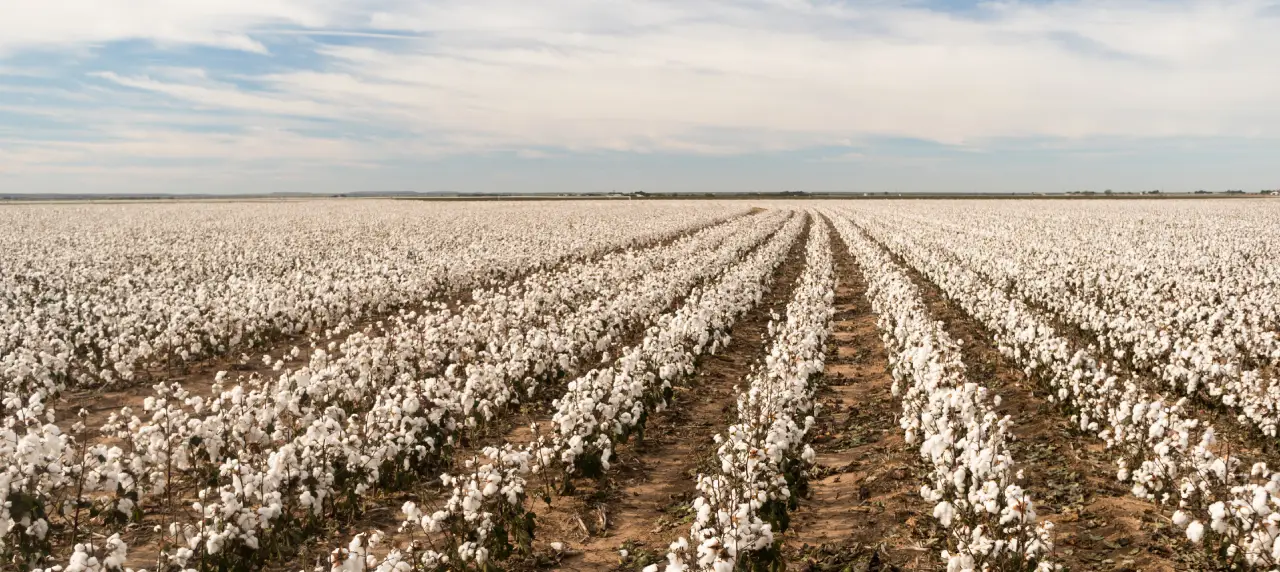
Iowa
| Number of Farms | Acres Operated |
|---|---|
| 86,700 | 30,000,000 |
Iowa is critical to the agriculture industry. It is a state where rich soil and innovative farming practices are united to create a powerhouse of productivity. Iowa’s farmland drives economic activity far beyond state lines. As one of the nation’s top agricultural exporters, Iowa supplies food and raw materials to markets around the world.
The USDA ranks Iowa as the top state in the US for several agricultural categories, including corn, egg production, pig farming, and the value of fields and crops.
The state’s agricultural traditions have been passed down through generations, fostering a strong farming culture rooted in family values. Today, this heritage lives on in the many family-owned farms that still operate across the state.
Amana Farms, located in Iowa, is a historic agricultural enterprise that continues the rich farming traditions of the Amana Colonies. The farm manages approximately 8,500 acres of row crops and maintains a 2,400-head cow-calf herd. Amana Farms adheres to sustainability — it operates an anaerobic digester that processes organic waste, including manure and industrial by-products.
| Top Commodities | Value of Production in Dollars |
|---|---|
| Corn, grain | 11,558,580,000 |
| Soybeans | 5,976,000,000 |
| Hay | 411,660,000 |
| Oats | 22,148,000 |
Missouri
| Number of Farms | Acres Operated |
|---|---|
| 85,700 | 26,900,000 |
Missouri boasts a rich agricultural heritage and a bright future. The state has more than 85,700 farms covering two-thirds of its land, with key products like soybeans, corn, cattle, hogs, and turkeys. Family-owned farms make up nearly 90% of operations, and over 10% of Missouri jobs are tied to agriculture and forestry.
The state’s diverse landscape plays a key role in its agricultural success. Abundant fertile soil creates ideal conditions for crop growth across the state. The Ozark Plateau, Missouri’s largest geographic region, features forested hills, scenic lakes, and clear rivers. In contrast, the Bootheel region is home to rich farmland that supports crops like cotton, rice, corn, and soybeans.
This geographic variety allows Missouri to produce different crops, including unique grape varieties used in the state’s wines.
Circle A Ranch, located in Missouri, is one of the state’s largest and most prominent cattle ranches. Covering over 24,000 acres, the ranch is dedicated to premium Angus beef production. It manages a cow-calf herd of approximately 7,000 head, focusing on genetics, quality, and efficiency. Circle A Ranch is also known for its involvement in beef cattle performance testing and its use of advanced technology to improve breeding and productivity.
| Top Commodities | Value of Production in Dollars |
|---|---|
| Soybeans | 2,890,216,000 |
| Corn, grain | 2,566,575,000 |
| Hay | 799,224,000 |
| Cotton, upland | 364,320,000 |
| Rice | 243,540,000 |
Get a Free Quote!
Ohio
| Number of Farms | Acres Operated |
|---|---|
| 74,000 | 13,500,000 |
Ohio’s farms are incredibly diverse in what they make and how they do it. The state produces more than 200 types of agricultural products, making it a top producer among farming areas nationwide.
While top commodities like poultry, cattle, calves, soybeans, corn, and dairy lead in production value, Ohio’s agricultural landscape also includes blueberries, strawberries, sweet corn, chestnuts, sunflowers, and much more.
Ohio’s Department of Agriculture runs programs focused on preserving farmland and promoting local products through the “Ohio Proud” marketing initiative, helping consumers identify and support Ohio-grown goods.
Niese Farms, based in Ohio, is one of the largest family-run farms in the state. It specializes in corn and soybean production. Known for using precision agriculture and conservation practices, Niese Farms represents the modernization of Midwest row crop farming. This farm is highly efficient and contributes significantly to Ohio’s agricultural economy.
| Top Commodities | Value of Production in Dollars |
|---|---|
| Soybeans | 2,565,300,000 |
| Corn, grain | 2,407,200,000 |
| Hay | 348,717,000 |
| Wheat | 217,388,000 |
| Pumpkins | 16,370,000 |
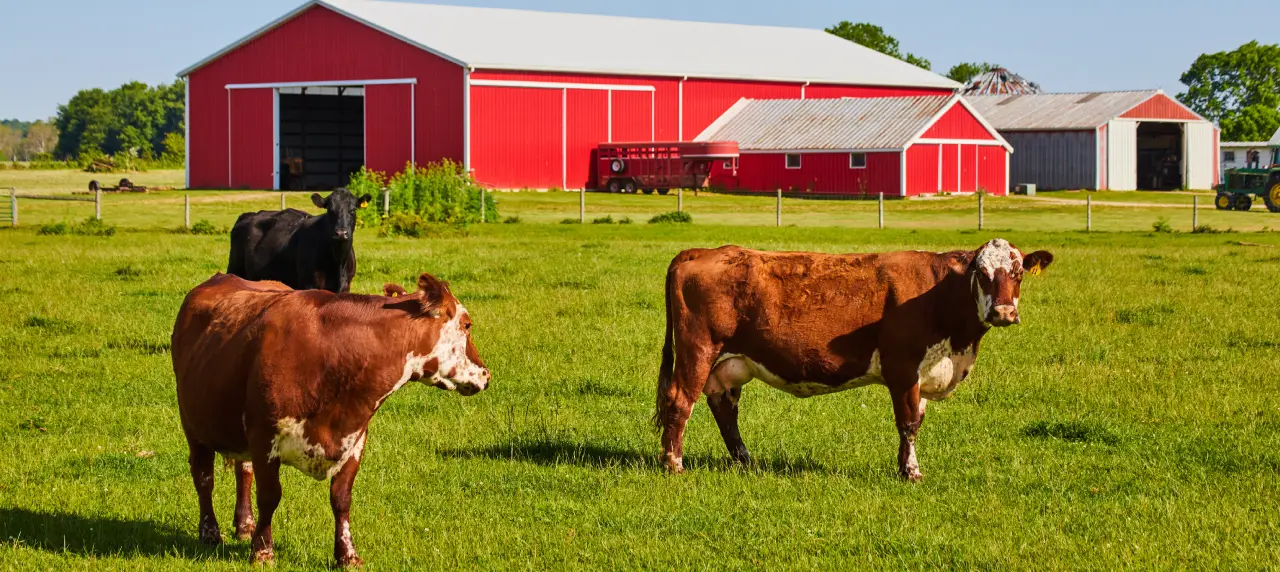
Illinois
| Number of Farms | Acres Operated |
|---|---|
| 70,000 | 26,300,000 |
Illinois is a farming powerhouse, with agriculture bringing in over $51.1 billion annually. Crops make up about 40% of that total. The state also ranks fifth in the nation for agricultural exports, shipping out $10.6 billion worth of goods each year.
Thanks to its incredibly fertile soil, Illinois farmers benefit from high yields. There are over 15,000 different soil types in the state, providing ideal conditions for cultivating a variety of crops.
Illinois is a top producer of soybeans, corn, and swine, but that is far from all. Thanks to its diverse soil types and favorable climate, farmers also raise cattle, sheep, and poultry, and grow wheat, oats, hay, fruits, and vegetables. In addition, the state is known for specialty crops like buckwheat, horseradish, and even Christmas trees.
Obery Farms, located in Metamora, Illinois, was established in 1874. Over the past 150 years, it has evolved into a significant agricultural enterprise, now managed by fifth-generation family members John, Mark, and Joel Obery. The farm specializes in cultivating corn and soybeans, integrating modern technologies and sustainable practices.
| Top Commodities | Value of Production in Dollars |
|---|---|
| Corn, grain | 9,937,515,000 |
| Soybeans | 7,086,400,000 |
| Wheat | 325,080,000 |
| Hay | 248,900,000 |
| Pumpkins | 20,602,000 |
Oklahoma
| Number of Farms | Acres Operated |
|---|---|
| 70,000 | 32,900,000 |
Agriculture has long played a key role in Oklahoma’s economy. While the state’s farms are slightly larger than the national average, their per-acre value tends to be a bit lower. Following national trends, the average farm size is expected to remain stable.
In terms of commercial agriculture, livestock leads the way, followed by dairy products, wheat, cotton, soybeans, and other field crops. In 2022, the market value of Oklahoma’s crops, including nursery and greenhouse products, exceeded $1.5 billion. Meanwhile, the value of livestock, poultry, and related products such as beef, pork, chicken, dairy, and eggs reached nearly $7 billion.
That same year, Oklahoma supported 22,993 honeybee colonies, which produced 234,008 pounds of honey.
One of Oklahoma’s most iconic and expansive cattle farms is owned by the Drummond family, well-known in the state’s ranching history. Their Drummond Ranch covers about 433,000 acres, making it one of the largest ranches in the US. The ranch is focused on cattle breeding. Ree Drummond, also known as ‘The Pioneer Woman’, has brought widespread attention to the family’s legacy and the ranch through her blog and TV show.
| Top Commodities | Value of Production in Dollars |
|---|---|
| Hay | 615,315,000 |
| Wheat | 606,480,000 |
| Corn, grain | 188,846,000 |
| Cotton, upland | 77,880,000 |
| Soybeans | 76,140,000 |
Kentucky
| Number of Farms | Acres Operated |
|---|---|
| 69,100 | 12,400,000 |
From a broiler industry to iconic products like bourbon, Kentucky’s agriculture plays a major role in the state’s economy and identity. The state produces top products such as chickens, horses, cattle, corn, and soybeans.
Kentucky has a long history in agriculture, especially when it comes to tobacco and horses. The state ranks first in the nation for horse sales and second for tobacco production. In 2024, farmers harvested 32,800 acres of tobacco and raised more than 111,000 horses. Beef production is also a big business. Kentucky has 869,000 beef cows and leads as the largest beef cattle producer.
“Kentucky Proud,” the state’s agricultural marketing program, supports over 4,000 local businesses. Additionally, the Kentucky Agricultural Development Board manages funds from the Master Settlement Agreement to support long-term agricultural growth.
Shadwell Farm, located in Kentucky, is among the largest thoroughbred breeding farms in the USA. Owned by the family of Sheikh Hamdan bin Rashid Al Maktoum, the farm covers approximately 3,400 acres in the heart of Kentucky. It is internationally recognized for its bloodstock and has produced numerous Grade 1 winners.
| Top Commodities | Value of Production in Dollars |
|---|---|
| Soybeans | 1,037,952,000 |
| Corn, grain | 1,025,280,000 |
| Hay | 898,200,000 |
| Tobacco | 197,447,000 |
| Wheat | 162,338,000 |

Minnesota
| Number of Farms | Acres Operated |
|---|---|
| 65,300 | 25,400,000 |
Minnesota’s richest and most productive farmland is located in the southern quarter of the state. This region, known for its dark prairie soils and hot, humid summers, is ideal for growing corn and soybeans. Further north, the Red River Valley offers a shorter growing season and lower humidity, making it well-suited for small grains and specialty crops like wheat, hay, sugar beets, and barley.
In the hilly Big Woods region, dairying takes center stage. Milk and dairy products are key sources of farm income, supported by the cultivation of feed crops. Farmers here also grow soybeans and potatoes as additional cash crops. Additionally, several parts of the state are large-scale turkey producers.
Minnesota’s Department of Agriculture provides direct support to farmers through education in risk management and sustainable, organic farming practices.
R.D. Offutt Farms is one of the largest potato growers in the United States. While the company is headquartered in North Dakota, it has a significant presence in central Minnesota, where it manages tens of thousands of acres. The farm is known for supplying McDonald’s with French fry potatoes and for its advanced research initiatives in crop improvement, irrigation efficiency, and soil conservation.
| Top Commodities | Value of Production in Dollars |
|---|---|
| Corn, grain | 5,850,837,000 |
| Soybeans | 3,294,000,000 |
| Wheat | 440,524,000 |
| Hay | 406,200,000 |
| Potatoes | 238,943,000 |
Tennessee
| Number of Farms | Acres Operated |
|---|---|
| 62,900 | 10,700,000 |
Tennessee’s agriculture industry is a vital part of the state’s life, supplying food, fuel, and fiber not only for its residents but for people around the world. In a typical year, Tennessee’s agriculture and forestry sectors contribute around $81 billion to the state’s economy and support approximately 342,000 jobs.
Leading commodities include soybeans, corn, cotton, hay, wheat, tobacco, and cattle. Nationally, Tennessee ranks 4th in tobacco and 2nd in goat production.
Tennessee is also well known for the Tennessee Walking Horse, a breed developed in the state’s central region and celebrated by equestrians nationwide.
Situated in Tennessee, Sweetwater Valley Farm is a third-generation dairy farm owned by John and Celia Harrison. The farm spans approximately 4,490 acres and is home to over 2,050 dairy cows. In 2018, it became Tennessee’s first Lely XL Dairy Farm, implementing automated milking systems that allow cows to be milked on schedule, enhancing animal welfare and operational efficiency.
| Top Commodities | Value of Production in Dollars |
|---|---|
| Soybeans | 771,120,000 |
| Hay | 541,948,000 |
| Corn, grain | 446,424,000 |
| Cotton, upland | 165,168,000 |
| Wheat | 127,200,000 |
California
| Number of Farms | Acres Operated |
|---|---|
| 62,500 | 23,700,000 |
About 40% of California’s land is dedicated to agriculture, with irrigated crops occupying around one-fifth of all working lands.
The state grows over 400 types of agricultural products, including a wide variety of fruits, vegetables, nuts, milk, nursery plants, flowers, fiber, and livestock. According to the California Department of Food and Agriculture, nearly half of the fruits, nuts, and vegetables grown in the US come from California.
Thanks to the state’s mild winters, farmers often grow more than one crop per year on the same land. This method, known as multicropping, involves planting multiple crops within a year and is practiced on roughly 800,000 acres of land. It is especially common in the Central Coast, the Colorado River region, and the southern Central Valley.
Tejon Ranch is the largest private landholding in California, covering 270,000 acres. Located north of Los Angeles, the ranch includes cattle grazing, farming, hunting, and conservation areas. It is one of the most diverse agribusinesses in the state, producing a variety of crops, including almonds, pistachios, and wine grapes.
| Top Commodities | Value of Production in Dollars |
|---|---|
| Tomatoes | 1,635,435,000 |
| Lettuce | 1,314,198,000 |
| Carrots | 1,107,406,000 |
| Tangerines | 1,012,571,000 |
| Broccoli | 983,946,000 |
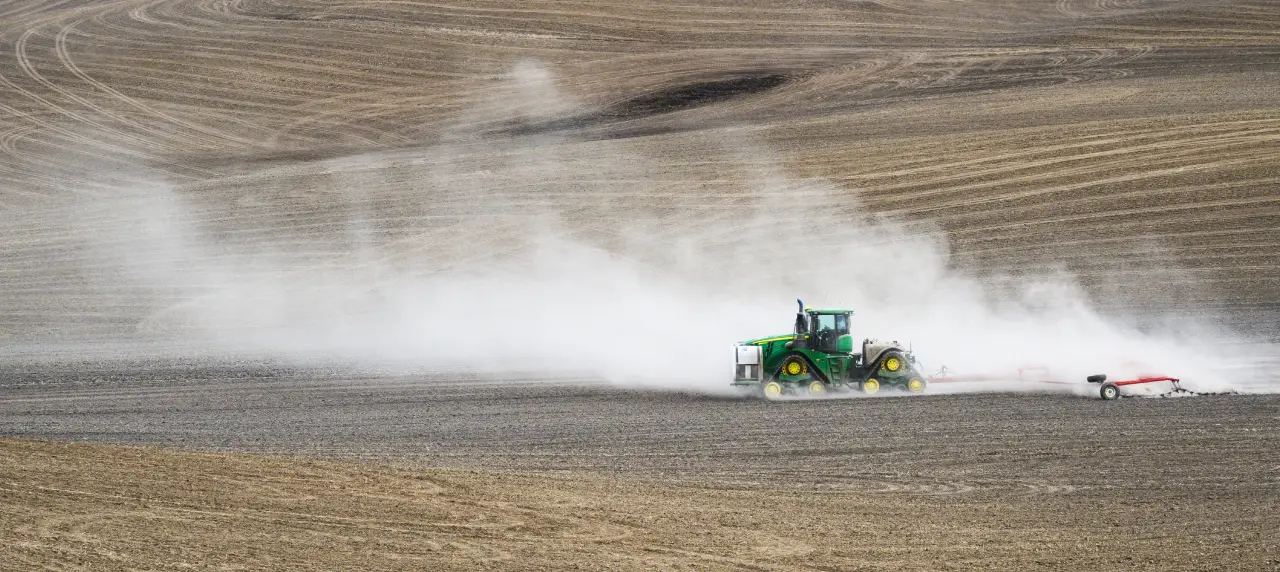
Conclusion
Farm states in the US are vital to the nation’s food system and economic health. From the expansive farmlands of Texas to the diverse crops of California, each state contributes distinct strengths to America’s agricultural landscape. Through a blend of innovation and tradition, these states nourish not only the nation but also the world.
Read More


